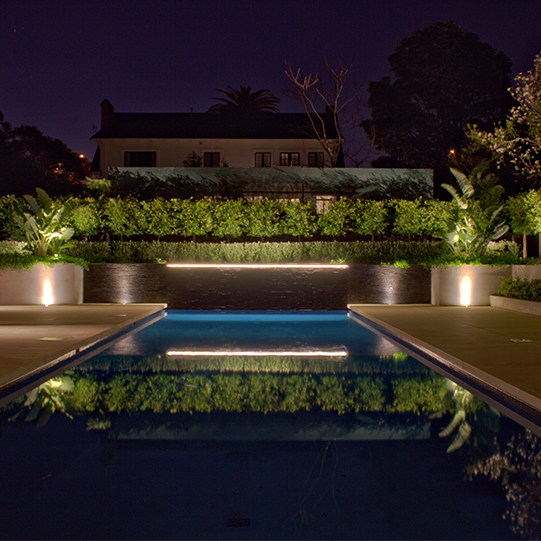When it comes to designing an inviting, relaxing, and safe outdoor space for night use and enjoyment, outdoor lighting plays a crucial role. To achieve stunning lighting effects, enhance energy efficiency, prolong lifespan, and offer flexibility, LED lamps are an excellent choice for outdoor and garden lighting. Furthermore, they come in various sizes and shapes, which makes it easy to retrofit into existing outdoor fixtures. If you are considering LED lamps for your outdoor lighting needs, here are some essential factors to consider.
Beam angle:
Beam angle refers to the spread of light produced by an LED lamp. It is measured in degrees and determines how wide or narrow the beam of light will be. A narrow beam angle (10-30 degrees) will produce a more focused beam of light, while a wide beam angle (60-120 degrees) will produce a more diffuse beam of light.
When selecting LED lamps for outdoor lighting, it is important to consider the desired lighting effect. For example, if you want to highlight the trunk of a palm tree or accentuate a brick or stone chimney, you will want to use LED lamps with a narrow beam angle to create a spotlight effect. On the other hand, if you want to create a more subtle and general lighting effect, you may want to use LED lamps with a wider beam angle to provide more overall illumination. Most garden and outdoor light fittings are supplied with a 38 to 45° lamp which is an excellent general-purpose lamp and will suit 80% of installations.
It is also important to consider the placement of the LED lamps when selecting the beam angle. For example, if you are installing LED lamps in a pathway, you may want to use lamps with a wider beam angle to provide more even lighting.
Light Output:
Light output, also known as luminous flux, is the amount of light emitted by an LED lamp. It is measured in lumens (lm). The higher the lumen output, the brighter the lamp will be. The amount of light output required for garden lighting will depend on several factors but most predominantly and commonly these 2 factors;
- what the subject is the type of plant, sculpture wall et cetera,
- the desired lighting effect.
For example, if you are looking to create a dramatic effect in your garden, you may want to use LED lamps with a higher lumen output. On the other hand, if you are looking for a more subtle lighting effect, you may want to use LED lamps with a lower lumen output.
For outdoor and garden lighting, lumens in the range of 300 to 750 lm are generally considered. Most fixtures are supplied within the 400 to 500 lm range.
Colour temperature:
When selecting LED lamps for garden lighting, it is also important to consider the Colour temperature of the light. Colour temperature is measured in Kelvin (K) and refers to the perceived Colour of the light. A lower Colour temperature (2700K-3000K) produces warm, yellowish light, while a higher Colour temperature (5000K-6000K) produces cool, bluish light.
We predominantly recommend and use warm white lamps (2700K-3000K) as they produce the most natural looking colours and tend to draw out the lovely depth of colour in your garden and planting compared with the cooler temperatures which can look quite harsh and at times artificial.
Heat resistance:
LED lamps produce very little heat compared to traditional light sources, such as incandescent bulbs. This makes them ideal for use in outdoor lighting fixtures, which are often exposed to harsh weather conditions. It is important however to use a LED lamp that is designed for enclosed garden lighting fittings otherwise the electronics can overheat when used in a waterproof fitting that is closed and does not allow the lamp to breathe. The incorrect choice of lamp can significantly reduce the longevity of your lamp.
Longevity – lifespan:
LED lamps have a longer lifespan compared to traditional light sources, with some models lasting over 30,000 hours. This means that you won’t have to replace them as frequently, which can save you money in the long run.
Energy efficiency:
LED lamps are highly energy-efficient, using up to 80% less energy compared to incandescent bulbs. This means that you can save on your electricity bills while reducing your carbon footprint.
High quality:
LED lamps produce a high-quality of light that is bright and clear, making them ideal for outdoor and garden lighting. They offer excellent colour rendering properties, which means that colours appear natural and vibrant.
Low heat output:
LED lamps produce very little heat compared to traditional lamps such as halogen, which makes them ideal for garden lighting. They are less likely to attract insects, and they won’t damage delicate plants or flowers.
Versatile:
LED lamps are available in different physical sizes, making it easy to retrofit them into existing fixtures. This means that you won’t have to replace the entire fixture, which can save you money and reduce waste. We do advise checking the dimensions as a small difference in the diameter or length can sometimes prevent a lamp from being used in a particular fitting.
In conclusion, LED lamps are an excellent choice for outdoor lighting and garden lighting. They offer numerous benefits, including energy efficiency, long lifespan, high quality, and versatility. If you’re looking to enhance the beauty and safety of your outdoor space while saving money on your electricity bills, consider switching to LED lamps for your outdoor lighting needs.

